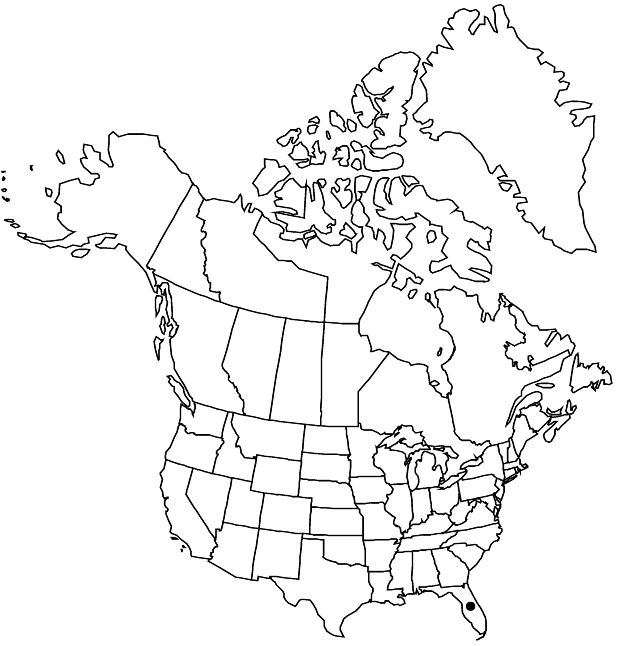Difference between revisions of "Jacquinia arborea"
Eclog. Amer. 1: 26. 1797 ,.
imported>Volume Importer |
imported>Volume Importer |
||
| Line 52: | Line 52: | ||
|publication year= | |publication year= | ||
|special status= | |special status= | ||
| − | |source xml=https:// | + | |source xml=https://bitbucket.org/aafc-mbb/fna-data-curation/src/2e0870ddd59836b60bcf96646a41e87ea5a5943a/coarse_grained_fna_xml/V8/V8_522.xml |
|genus=Jacquinia | |genus=Jacquinia | ||
|species=Jacquinia arborea | |species=Jacquinia arborea | ||
Latest revision as of 22:44, 5 November 2020
Shrubs or trees to 5 m; twigs grayish brown, lepidote when young, glabrescent. Stems gray, nearly smooth. Leaves usually distinctly pseudoverticillate; petiole to 7 mm, glabrous or sparsely puberulous; blade 3–8(–12) × 1.5–4(–5) cm, coriaceous, margins slightly revolute, apex rounded or retuse, mucronate or mucro absent. Racemes 7–25(–40)-flowered, to 6(–12) cm, commonly exceeding leaves. Pedicels 7–13 mm; bracts lanceolate, 1–1.5 mm. Flowers: sepals 2.2–3.2 mm, margins entire or slightly erose; petals 7–9 mm, lobes ca. as long as or slightly shorter than tube; stamens shorter than staminodes; staminodes oblong to ovate, 1.8–3 × 2–3 mm, apex rounded or retuse. Berries orange-red or red, 7–11 mm diam., pericarp smooth. Seeds light brown, 3–5 mm.
Phenology: Flowering winter–spring.
Habitat: Coastal strands, disturbed sites, mangrove forest edges
Elevation: 0-10 m
Distribution

Introduced; Fla., Mexico, West Indies (Jamaica, Lesser Antilles, Puerto Rico), Central America (Honduras).
Discussion
Cultivated and escaped in Florida, Jacquinia arborea is occasional in disurbed coastal communities of Broward and Miami-Dade counties and the Monroe County keys.
Selected References
None.